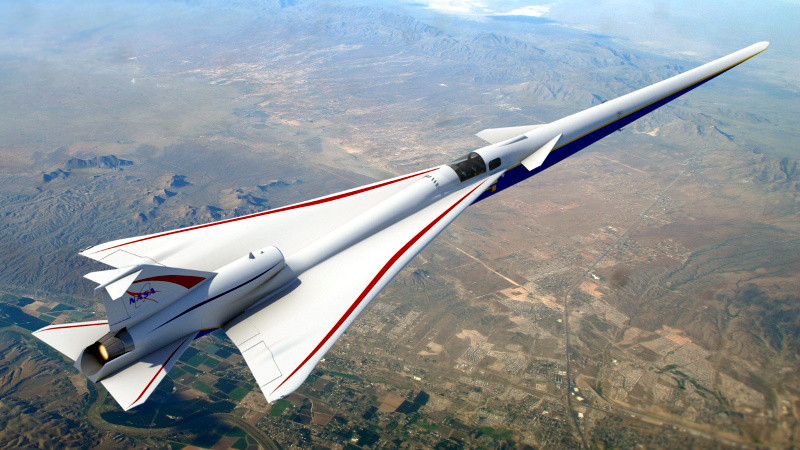The X-59 QueSST is the latest supersonic demonstration aircraft that Lockheed Martin is busy building for NASA. The idea is to reduce the ground-level intensity of the sonic booms over land and while the X-59 QueSST has a variety of interesting features, what amazes is the fact that it has a 4K display in the front of the cockpit replacing the forward-facing window.

The choice of opting for a 4K display instead of a window sure sounds bizarre, but that is what Lockheed Martin has done with its new X-59 Quiet Supersonic Technology (QueSST). NASA has already released an image of the cockpit that shows that there are three displays at the front; one 4K display is placed directly in the line of sight of the pilot while the others two are just beneath it.

These three 4K screens are capable of providing an enhanced view of what is going on outside the aircraft to the pilot. Two external cameras are installed that are tasked with providing imagery to the primary 4K display. The images are stitched into a single video stream by making use of an enhanced overlay that incorporates additional instrument readings and lane guidance. The two screens below feature terrain information about the land below the plane while also showing object and obstacle detection information.

Just so that we are clear, the plane does have windows. The cockpit features an over-the-top window that provides a considerable view on either side and even above the aircraft. There are also two smaller windows on both sides of the 4K display providing the pilot with increased visibility beyond the edges of the display.

The X-59 QueSST has been designed using some really cool aerodynamic fixes to a conventional supersonic aircraft, and it is being hoped that it will create a sonic boom that has a much lower intensity. Lockheed Martin is developing the aircraft for NASA to carry out a demonstration for civilian regulators to assess and come up with new standards for supersonic aircraft that wish to be certified for travelling over land. As of right now, supersonic jets are not allowed to travel over the land in the US. The ban is in place because of the sonic boom that these aircraft make once they break the sound barrier. This loud sounds can be troublesome and even dangerous for the people who are down on the ground.

The X-59 QueSST is part of the industry’s effort to significantly reduce the intensity of the sonic boom and thus be able to bring back supersonic aircraft into commercial service.


